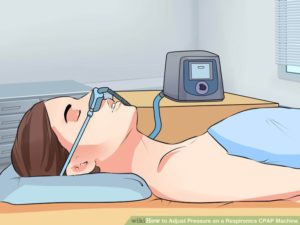How does CPAP work
Oct. 17, 2016
This blog covers what CPAP stands for and how it works. CPAP stands for Continuous Positive Airway Pressure. It is a therapy device that applies mild air pressure on a continuous basis to keep the airway continuously open. CPAP is the most effective Treatment for obstructive sleep apnea. In fact, CPAP is a more effective treatment than an oral appliance or surgery due to CPAP opening up the entire airway no matter what the cause of the obstruction. Oral appliances and surgery target particular areas of the airway, so are sometimes not as effective.
Obstructive sleep apnea occurs when the upper airway becomes narrow as the muscles relax naturally during sleep. This reduces oxygen in the blood and Causes arousal from sleep. The CPAP machine stops this phenomenon by delivering a stream of compressed air via a hose to a mask splinting the airway (keeping it open under air pressure) and prevent the airway from collapsing.
CPAP also may be used to treat preterm infants whose lungs have not yet fully developed. For example, physicians may use CPAP in infants with respiratory distress syndrome. In some preterm infants whose lungs haven’t fully developed, CPAP improves survival and decreases the need for steroid treatment for their lungs. CPAP is also used in the hospital setting for adults to improve the ability of the lungs to exchange oxygen and carbon dioxide and to decrease the work of breathing.
The CPAP machine blows air at a prescribed pressure (also called the titrated pressure). The titrated pressure is the pressure of air at which most of apneas (stops in breathing) and hypopneas (shallow breathing) have been prevented, and it is usually measured in centimetres of water (cmH2O). A typical CPAP machine can deliver pressures between 4 and 20 cmH2O.
The mask required to deliver CPAP must have an effective seal, and be held on very securely. There are three types of masks. Nasal pillow, nasal and full face mask. Nasal pillow masks maintain its seal by being inserted slightly into the nostrils and being held in place by straps around the head. Nasal masks cover the nose and full face masks cover your nose and mouth. Both masks “float” on the skin like a hovercraft, with thin, soft, flexible “cushion” made out of silicone. Headgear is used to keep the masks secure on the face. For more information on CPAP and masks and their features check http://www.cansleep.ca/products/.
By Bahareh Ezzati (BSc, CPhT, RRT)






